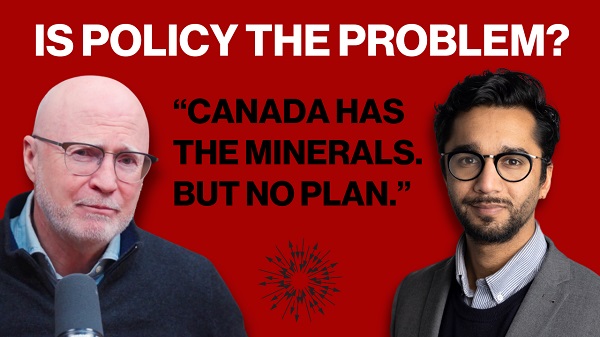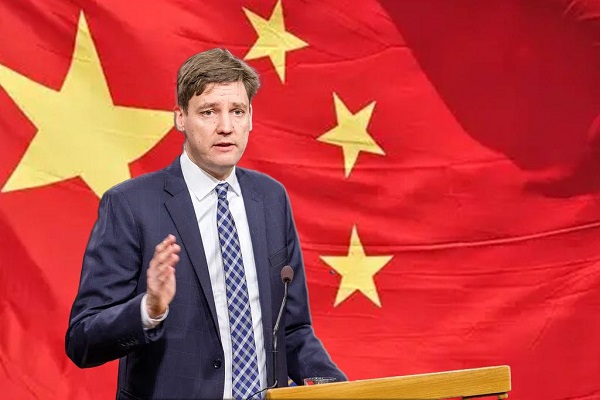Bruce Dowbiggin
Irish Saying: Is This A Private Fight Or Can Anyone Join?
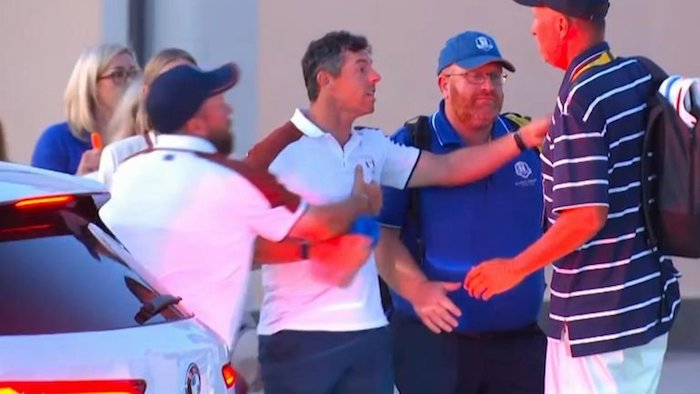
There’s no crying in baseball. And there’s no fighting in golf. Unless LIV is involved.
Don’t tell the participants in the Ryder Cup this past weekend. Under the sunny skies of Rome, the Americans and Europeans produced storm clouds over… brace for it… a golf hat. Or the lack of a golf hat. Let us explain.
American player Patrick Cantlay chose to go hatless, eschewing the U.S. team wardrobe that everyone else agreed to wear. Needless to say the hat had patriotic themes and Cantlay’s decision was seen to be controversial. It was not like quarterback Colin Kaepernick kneeling for the national anthem, but to those loyal to Old Glory its seemed disrespectful.
It wasn’t helped when media reported that Cantlay had declined the chapeau because, as opposed to teammate, LIV member Brooks Koepka, he wasn’t receiving a bonus for wearing the hat. And that, as a result, the embattled U.S. team was split over the controversy. (After first saying that he couldn’t find a hat that fit, Cantlay later changed his story to say that the bonus/ dissension story was false.)
That was all the partisan European fans needed to hear. They began mocking Cantlay by doffing their hats and jeering him as Team USA stumbled on Friday and Saturday. Rather than fold, however, Cantlay went on a blazing run in Saturday’s final match against Rory McIlroy and Matthew Fitzpatrick. Posting three straight birdies, his last forced the emotional Irishman into a difficult putt on 18 to get a tie.

After Cantlay’s dramatic putt dropped, his caddie Joe LaCava (formerly Tiger Woods’ caddie) mocked the crowd by doffing his hat in McIlroy’s vision. As he did he came close to McIlroy who was preparing for his ultimately unsuccessful putt. The two exchanged words. They were not, “Have a good day.” European team member Shayne Lowry then yelled at LaCava who returned fire.
When the sniping ended, the bare-headed Cantlay sunk a dramatic putt to give America hope on Sunday. But that didn’t end the unpleasantness. In the parking lot, McIlroy got into it with Justin Thomas’ caddy Jim “Bones” McKay. Lowry had to physically shove his fellow Irishman into a car to end the confrontation.
Golf’s chattering classes went mad with excitement. What would happen on Sunday as Europe attempted to win the four points that would return them the Cup? Would America be inspired? Was Europe distracted by McIlroy’s intemperate blasts?
Sunday, LaCava told media he’d met with McIlroy that morning to smooth things over. No hard feelings. In the end, etc. The most visible sign of Saturday’s ruckus was Cantlay buddies Justin Thomas, Colin Morikawa and Xander Schauffele also going hatless in solidarity. It didn’t help as Europe— led by McIlroy spanking Sam Burns 3&1— won the Cup 16.5-11.5. And McIlroy called LaCava a liar about talking to him.

But there was no mistaking the witches’ brew cooked up on the weekend in Italy. The well-rested Americans were handed their hats (badda-bing) early by a Euro squad seeking revenge for their loss at Whistling Straits in 2021. The coach’s selections on the U.S. side— Thomas, Koepka, Burns and Rickie Fowler— stunk out the joint. Calling them coach’s selections exaggerates. Zach Johnson was told by his core players whom to invite.
The Euro coach’s selections might not have been brilliant, but they didn’t hinder the win. Nor were the Euros hurt by the partisan crowd that hooted, chanted and sang its dislike for the Yanks. But that is the Ryder Cup, and when the sides meet again at NYC’s Bethpage Black in 2025 the rabble will reciprocate.
Some players called for calm. Rahm asked everyone to cool down after his half on Sunday. Cantlay smiled benignly through all the hullabaloo, saying the chaos is what makes the Ryder Cup great. But they were drowned out by the international press that pronounced critically on American vanity and the Euros swagger.

The Ryder Cup is traditionally— if not actually— considered the end of the golf season, the culmination of the majors and the FedEx Cup season. So it seemed only appropriate that the first full year of the Saudi-backed LIV Golf end with a sour taste for many. McIlroy, for one, has had a miserable time mixing the old (he won 2 times and earned $13,921,008 but with no majors) and the new (as defiant spokesman for the PGA Tour versus LIV he was hung out to dry by the Tour and many fellow players who allowed him to fight their fight). His outburst Saturday/ Sunday showed the strain he’s carried.

As the only LIV member playing at Marco Simone Koepka did little to put a happy face on his chosen Tour. Dour, sullen and churlish, he refused the ceremonial doffing of his hat when he’d schooled young Lucas Aberg 3&2. Not that the European and PGA Tour officials connected to the Ryder Cup extended a hand or made pleasant noises about the proposed merger with LIV.
Indeed, the ghosts of LIV members haunted the event. Ryder Cup legends Ian Poulter, Lee Westwood, Henrik Stenson, Graham McDowell, Paul Casey, Dustin Johnson and Phil Mickelson were not only excluded from playing but told there was no place in the coaching room of their teams. It all felt somewhat hollow at times.
Thanks goodness #HatGate resurrected a bit of the old-fashioned bile that makes Ryder Cups so anticipated. For all the polite chumminess of today’s PGA Tour, a silly pissing match is a nice diversion. After all, as Conn Smythe once said after a brawl-filled hockey game, “Much more of this and we will have to print extra tickets for the next game.”
Sign up today for Not The Public Broadcaster newsletters. Hot takes/ cool slants on sports and current affairs. Have the latest columns delivered to your mail box. Tell your friends to join, too. Always provocative, always independent. https://share.hsforms.com/16edbhhC3TTKg6jAaRyP7rActsj5
Bruce Dowbiggin @dowbboy is the editor of Not The Public Broadcaster A two-time winner of the Gemini Award as Canada’s top television sports broadcaster, he’s a regular contributor to Sirius XM Canada Talks Ch. 167. Inexact Science: The Six Most Compelling Draft Years In NHL History, his new book with his son Evan, was voted the seventh-best professional hockey book of all time by bookauthority.org . His 2004 book Money Players was voted sixth best on the same list, and is available via http://brucedowbigginbooks.ca/book-personalaccount.aspx
Bruce Dowbiggin
The Game That Let Canadians Forgive The Liberals — Again

With the Americans winning the first game 3-1, a sense of panic crept over Canada as it headed to Game 2 in Boston. Losing a political battle with Trump was bad enough, but losing hockey bragging rights heading into a federal election was catastrophic for the Family Compact.
“It’s also more political than the (1972) Summit Series was, because Canada’s existence wasn’t on the line then, and it may be now. You’re damn right Canadians should boo the (U.S.) anthem.” Toronto Star columnist Bruce Arthur before Gm. 1 of USA/ Canada in The 4 Nations Cup.
The year 2025 is barely half over on Canada Day. There is much to go before we start assembling Best Of Lists for the year. But as Palestinian flags duel with the Maple Leaf for prominence on the 158th anniversary of Canada’s becoming a sovereign country it’s a fair guess that we will settle on Febuary 21 as the pivotal date of the year— and Canada’s destiny as well.
That was the date of Game 2 in the U.S./Canada rivalry at the Four Nations Tournament. Ostensibly created by the NHL to replace the moribund All Star format, the showdown of hockey nations in Boston became much more. Jolted by non-sports factors it became a pivotal moment in modern Canadian history.
Set against U.S. president Donald Trump’s bellicose talk of Canada as a U.S. state and the Mike Myers/ Mark Carney Elbows Up ad campaign, the gold-medal game evoked, for those of a certain age, memories of the famous 1972 Summit Series between Canada and the USSR. And somehow produced an unprecedented political reversal in Canadian elections.
As we wrote on Feb. 16 after Gm. 1 in Montreal, the Four Nations had been meant to be something far less incendiary. “Expecting a guys’ weekend like the concurrent NBA All Star game, the fraternal folks instead got a Pier Six brawl. It was the most stunning beginning to a game most could remember in 50 years. (Not least of all the rabid Canadian fanbase urging patriotism in the home of Quebec separation) Considering this Four Nations event was the NHL’s idea to replace the tame midseason All Star Game where players apologize for bumping into each other during a casual skate, the tumult as referees tried to start the game was shocking.
“Despite public calls for mutual respect, the sustained booing of the American national anthem and the Team Canada invocation by MMA legend Georges St. Pierre was answered by the Tkachuck brothers, Matthew and Brady, with a series of fights in the first nine seconds of the game. Three fights to be exact ,when former Canuck J.T. Miller squared up with Brandon Hagel. (All three U.S. players have either played on or now play for Canadian NHL teams.)
“Premeditated and nasty. To say nothing of the vicious mugging of Canada’s legend Sidney Crosby behind the U.S. net moments later by Charlie McEvoy.”
With the Americans winning the game 3-1 on Feb. 15, a sense of panic crept over Canada as it headed to Game 2 in Boston. Losing a political battle with Trump was bad enough, but losing hockey bragging rights heading into a federal election was catastrophic for the Family Compact. As we wrote in the aftermath, a slaughter was avoided.

“In the rematch for a title created just weeks before by the NHL the boys stuck to hockey. Anthem booing was restrained. Outside of an ill-advised appearance by Wayne Gretzky— now loathed for his Trump support— the emphasis was on skill. Playing largely without injured Matthew and Brady Tkachuk and McAvoy, the U.S. forced the game to OT where beleaguered goalie Craig Binnington held Canada in the game until Connor McDavid scored the game winner. “
The stunning turnaround in the series produced a similar turnaround in the Canadian federal election. Galvanized by Trump’s 51st State disrespect and exhilarated by the hockey team’s comeback, voters switched their votes in huge numbers to Carney, ignoring the abysmal record of the Liberals and their pathetic polling. From Pierre Poilievre having a 20-point lead in polls, hockey-besotted Canada flipped to award Carney a near-majority in the April 28 election.
The result stunned the Canadian political class and international critics who questioned how a single sporting event could have miraculously rescued the Liberals from themselves in such a short time.

While Canada soared because of the four Nations, a Canadian icon crashed to earth. “Perhaps the most public outcome was the now-demonization of Gretzky in Canada. Just as they had with Bobby Orr, another Canadian superstar living in America, Canadians wiped their hands of No. 99 over politics. Despite appeals from Orr, Don Cherry and others, the chance to make Gretzky a Trump proxy was too tempting.
We have been in several arguments on the subject among friends: Does Gretzky owe Canada something after carrying its hockey burden for so long? Could he have worn a Team Canada jersey? Shouldn’t he have made a statement that he backs Canada in its showdown with Trump? For now 99 is 0 in his homeland.”
Even now, months later, the events of late February have an air of disbelief around them, a shift so dramatic and so impactful on the nation that many still shake their heads. Sure, hockey wasn’t the device that blew up Canada’s politics. But it was the fuse that created a crater in the country.
Bruce Dowbiggin @dowbboy is the editor of Not The Public Broadcaster A two-time winner of the Gemini Award as Canada’s top television sports broadcaster, his new book Deal With It: The Trades That Stunned The NHL And Changed hockey is now available on Amazon. Inexact Science: The Six Most Compelling Draft Years In NHL History, his previous book with his son Evan, was voted the seventh-best professional hockey book of all time by bookauthority.org . His 2004 book Money Players was voted sixth best on the same list, and is available via brucedowbigginbooks.ca.
Bruce Dowbiggin
Don & Rick: Canadian Icons, Mixed Messages, Lasting Impacts
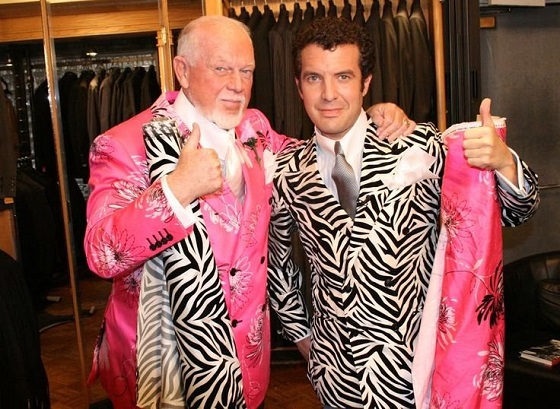
“Well, Tim, this is our last show. . . . Thanks everybody for listening and toodaloo,” 91-year old Don Cherry allegedly on his final podcast episode.
Once upon a time in a public broadcaster far, far away there was an identity crisis. Who should we be as we enter the 21st century? We depend on government for our financing, but our audience relies on people who hate government.
At CBC that argument could be summed up by two figures on the TV network. Rick Mercer. Don Cherry. Both were brilliant communicators, masters of the craft of holding eyeballs. But they represented diametrically opposed audiences. Mercer was the glib political voice of This Hour Has 22 Minutes. Cherry was the bombastic voice of Hockey Night in Canada, as Canadian as the brown beer stubby.
Mercer was worshipped by the folks in the C suite and liberal media. With his searing walking shots he lanced egos and asked uncomfortable questions. He called out sacred cows. Yet there was never any doubt in CBC’s upper reaches about whose side he was on in the culture war at CBC. He was safe.
Cherry was the unpredictable occupant of Coach’s Corner, the bombastic voice of white anglo hockey culture. He was abrasive and unforgiving. His first-period rants beside his Topo Gigio Ron Maclean were must-watch for the demographic. They also, it seemed, constituted must watching for his critics.
[Confession: I was one of his critics, paid to be so. We tangled often over his act. He ripped me in the 2004 NHL playoffs, alleging I said he was insincere about kids with cancer. During the infamous 1987 World Junior brawl he said I was a coward who wouldn’t defend his own kids in a fight. etc. He sicced his bots on me. While I disagreed with much of what he said, I defended his right to say such things. My beef was mostly with HNIC which refused to allow any dissent to Cherry’s act on the show . It was a noisy one-note symphony.

Don was durable, holding his prime position for decades, putting himself above the title many Saturdays with headline material. In the sea of pearl clutchers at CBC he stood out. While the suits above recoiled at his Canadian Legion catechism, they also knew he was an asset they could play when they went for funding in Ottawa. “See, we have all sorts of political views on the network.”
When CBC lost its HNIC franchise to Sportsnet Cherry became someone else’s problem. Eventually the Woke folk at Rogers tired of telling him to knock off the politics and cultural stuff. He was let go in 2019 for saying what he’d always said. Maclean then put in the knife to save his own hide.
Mercer’s highly rated act continued unabated till 2018. One of his most popular gigs— the one most likely to appeal to posh Canadians— was talking to Americans about Canada. It was brilliant in its simplicity. Go to famous colleges and universities to plumb the depths of their Canadian knowledge. Likewise, buttonhole well-known American politicians.

The topics were many and ridiculous. Should Canada protect the famous location Joe Clark’s Hole? What should Canada do about its melting national igloo? Could they congratulate Jean Chretien on a rare political feat called a “Double Double” in which he received support from both sides of the Canadian parliament.
He asked Al Gore about Canada moving the capital city from Kingston, Ontario to Toronto (Gore thought it smart). He convinced tourists at Mount Rushmore that the mineral rights to the mountain had been sold to a Canadian firm that was getting ready to drill for oil in Lincoln’s forehead.
He asked Americans to condemn Canada’s practice of euthanizing senior citizens by setting them adrift on Northern ice floes. In a famous moment, future President George W. Bush failed to correct Mercer when he referred to Chrétien as “Jean Poutine”
Mercer always said he didn’t think Americans were ignorant. Eighty percent had the right responses and those never made it to air. For the rest it was just that they couldn’t resist an open mike and having a take on things they knew nothing about. He had affection for them.
For Canada’s Left, insecure in its northern faculty-lounge, that subtlety was lost. Mercer’s routines reinforced a smug anti-American attitude in the Liberals and NDP base. All they saw was a nation of nitwits. “Look, what bozos!” The orientation of the fashionistas turned away from the U.S. to supposed European sophistication and societal controls for climate, population growth and Covid. Hello, Mark Carney.
This bias was reinforced by the increasingly self-loathing voices on the cable news of the American Left. Every GOP figure from George W. Bush till Trump today became a comic character. Canadian lefties adored it. As we’ve written often the snide attitude allowed Canadians to ignore that Americans were protecting them for free and keeping them rich. And taking the overflow from Canadian’s prized healthcare system.
This arrogance culminated in the March election where the mere mention of Trump sent Canadians fleeing back to a Liberal administration that was moribund after a decade of incompetence. It has an echo in Toronto’s Hockey Hall of Fame again declining to award Cherry the Foster Hewitt award as a legendary TV journalist. Love him or hate him he’s earned it. It’s arguable whether the aging Cherry will even be around to be chosen next year.
For sure his political impact will resonate for long after he’s gone in the populist resurgence in western Canada and elsewhere. If only Rick Mercer were allowed back on CBC to cover it.
Bruce Dowbiggin @dowbboy is the editor of Not The Public Broadcaster A two-time winner of the Gemini Award as Canada’s top television sports broadcaster, his new book Deal With It: The Trades That Stunned The NHL And Changed hockey is now available on Amazon. Inexact Science: The Six Most Compelling Draft Years In NHL History, his previous book with his son Evan, was voted the seventh-best professional hockey book of all time by bookauthority.org . His 2004 book Money Players was voted sixth best on the same list, and is available via brucedowbigginbooks.ca.
-
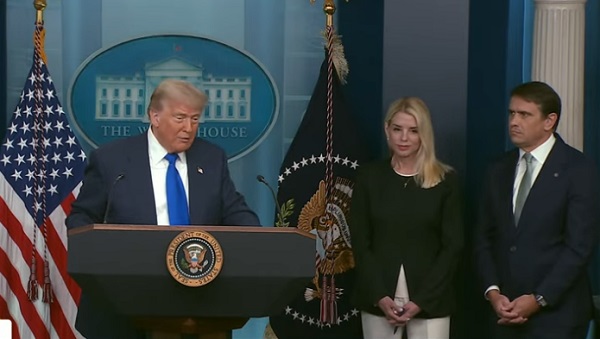
 Business1 day ago
Business1 day agoTrump on Canada tariff deadline: ‘We can do whatever we want’
-

 Automotive1 day ago
Automotive1 day agoElectric vehicle sales are falling hard in BC, and it is time to recognize reality.
-

 Brownstone Institute2 days ago
Brownstone Institute2 days agoFDA Exposed: Hundreds of Drugs Approved without Proof They Work
-
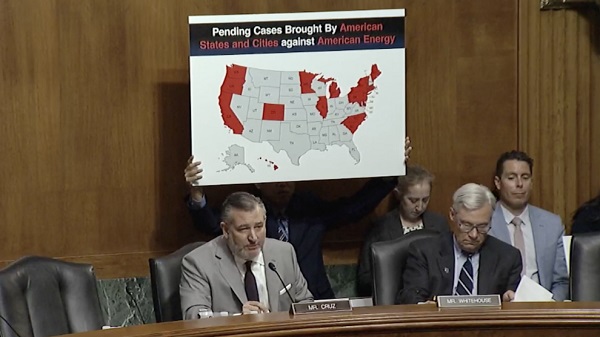
 Energy2 days ago
Energy2 days agoChina undermining American energy independence, report says
-
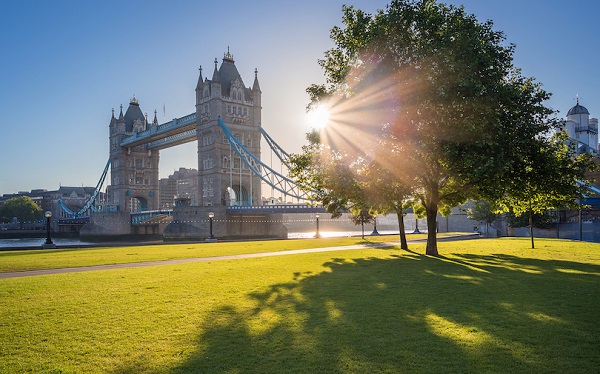
 Business1 day ago
Business1 day agoEurope backs off greenwashing rules — Canada should take note
-

 Automotive1 day ago
Automotive1 day agoPower Struggle: Electric vehicles and reality
-

 Business11 hours ago
Business11 hours agoCanada Caves: Carney ditches digital services tax after criticism from Trump
-

 Crime11 hours ago
Crime11 hours agoSuspected ambush leaves two firefighters dead in Idaho


